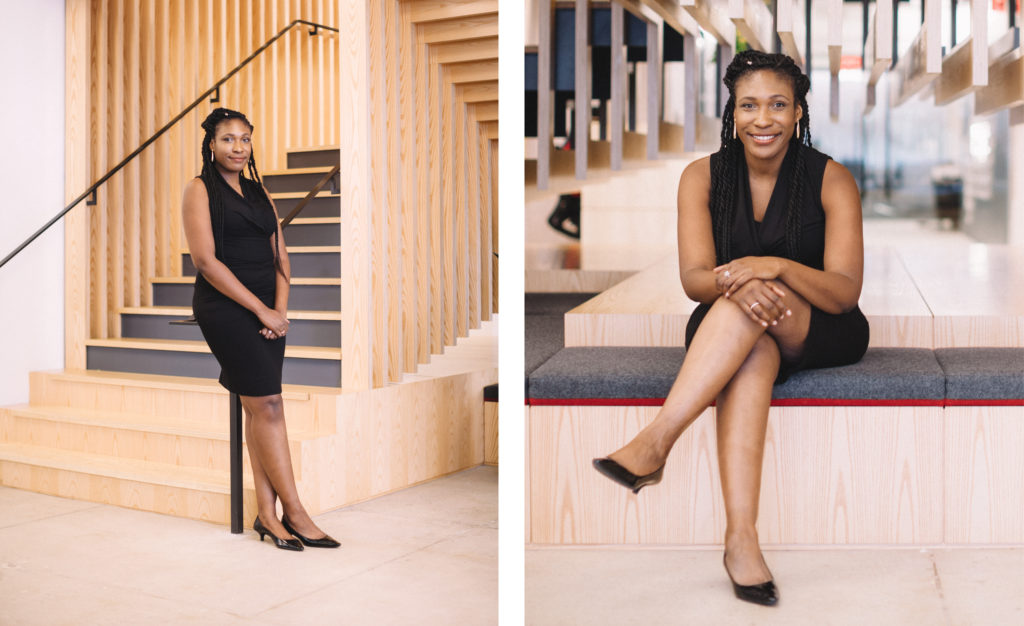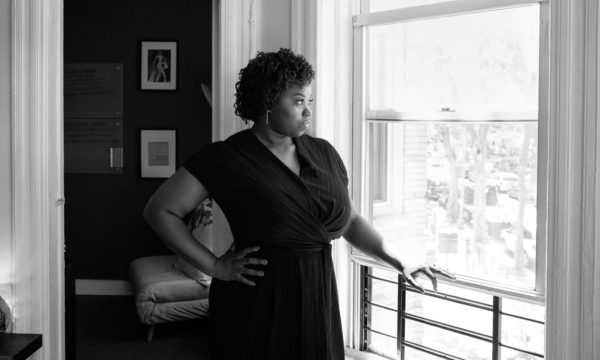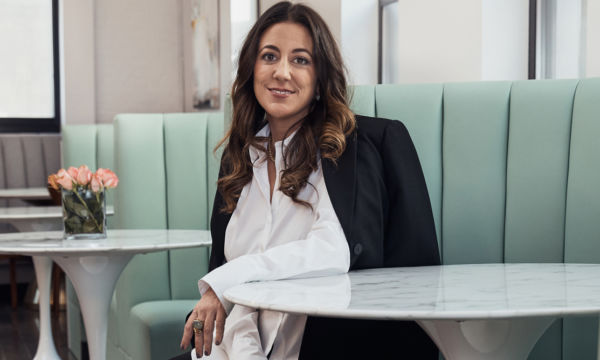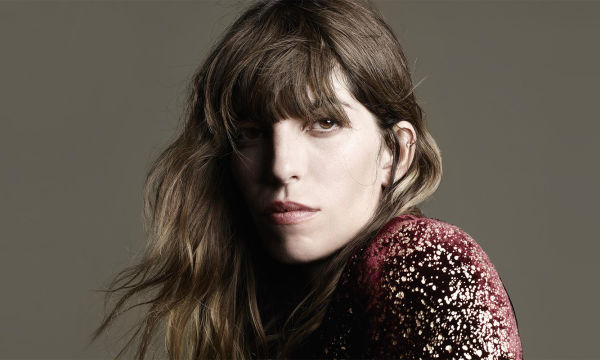Candice Morgan, Pinterest’s Head of Diversity, Takes Nothing for Granted
October 05, 2017 | Filed in: Woman of the Week
When Candice Morgan was hired to be Pinterest’s head of diversity in January 2016, the tech world took note: A member of their Silicon Valley brethren was making good on the promise to change the demographics of its largely white, largely male talent pool. Candice has since pursued Pinterest’s aggressive hiring goals (which the company’s co-founder, Evan Sharp, shared publicly in mid-2015) and increased rates of diversity across all categories as the company grows—but that’s just the beginning. We visited her at Pinterest’s New York office to talk about romance and race (the subject of her college thesis!), cultural differences, and how one test in middle school changed the course of her life.
SOME PEOPLE DON’T UNDERSTAND MY ROLE or why it’s necessary, and in some ways, that’s understandable. There’s a history within this industry and this country that make it difficult to comprehend why some people have differential access to advancement than others. Some people are encountering this information for the first time. Culturally, there are also some people who don’t value equality in the same way. It is what it is. I think there’s a lot of education we have to do all the time now, to help people understand that there is a lot of unequal footing. Personally, to get to where I am today, I had a lot of people who believed in me, and I had a lot of opportunities. Sometimes we take those things for granted, and we need to understand that not everybody has them.
MY JOB AT PINTEREST consists of three major pillars. The first involves access to diversity: who we recruit to work here, and how we reach people who might not have the network or connections to begin a career in tech. It also consists of ensuring that employees have pathways to the leadership roles they aspire to. Diversity isn’t just who you recruit, but also who you promote, what kinds of assignments people get, and the fairness of our assessments and processes. So that’s one pillar. The second involves having conversations around identity and inclusion, which is multi-pronged. You want people to feel valued and see others like themselves at all levels of the company, and also, you want the advancement process to be fair. That touches everything from employee interviews to our performance review system and how people understand their performance expectations. And finally, the third pillar is about our product and our service. Pinterest is all about making sure that everything you see is relevant to you. Being able to predict that is crucial to our success, and having a diverse workforce is integral to that.
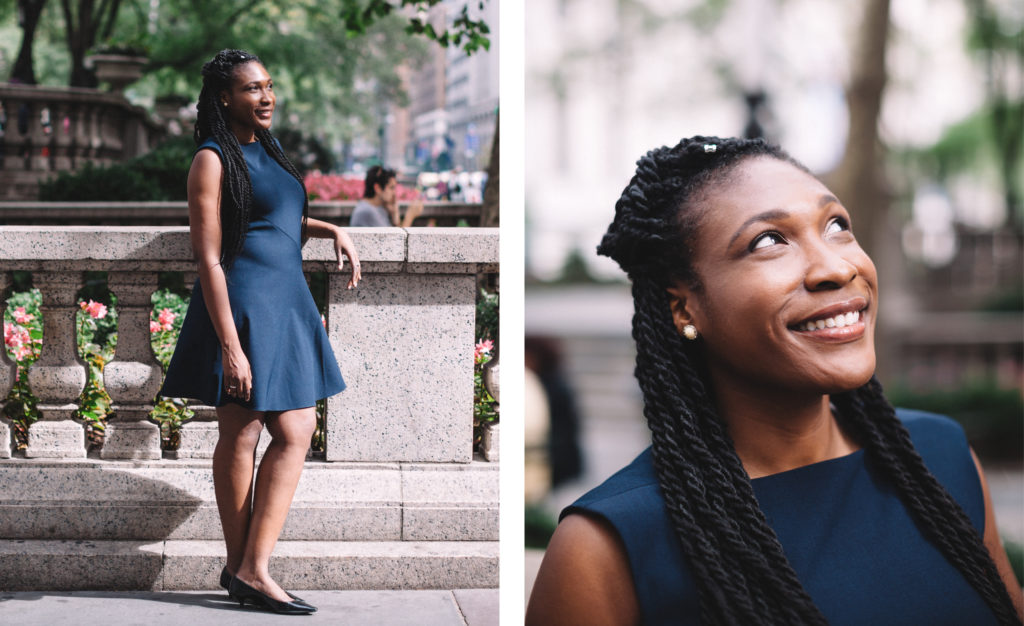
Candice wears the Pauline dress in Galaxy Blue.
I WAS BORN IN QUEENS and grew up in three different boroughs of New York. My parents separated when I was young, and I had a very different upbringing after they were divorced. When they were together, I’d gone to a private school; then my mom and I moved to a low-income neighborhood in deep Harlem, and I saw a very different environment. What really helped me is that I loved and valued school, and so does my mom. I was young for my grade, and when I switched to public school, they tried to put me back a year because of my age. My mom said, “Test her.” I ended up doing well, and from then on I was in advanced and gifted classes. That in itself was huge, because I was in a big school in PS4 in New York City, which is the poorest school district. I had opportunities because my mom advocated for me. When we moved to the Bronx, I tested again and stayed on that track.
AN IMPORTANT TURNING POINT for me was the opportunity to take the specialized high school exam for New York City. First of all, most kids in New York City public schools don’t even know that they can take a test and get into one of the best high schools in the country, Stuyvesant. They have no idea. Second, most of those students don’t have the curriculum to do as well on the test. A lot of kids whose families can afford it will take special classes to prepare for the exam, but most of those programs are expensive. I remember my mom begged and borrowed to get the money to send me to prep classes for a few weeks. I still didn’t think I’d get in. You have a three to four percent chance. It just shows how hard that access is, and how skewed the opportunities are. It’s remarkable. I was the first student in three years to go to Stuyvesant from my school.
I LOVED HIGH SCHOOL, and I met almost all my best friends there. But it made me wonder: We know that opportunity should be distributed equitably, but somehow people end up in different places. I thought, “This can’t be right. I’m no different from anyone else around me in my neighborhood; why am I in such a different environment? It makes no sense.” That’s always stayed with me.
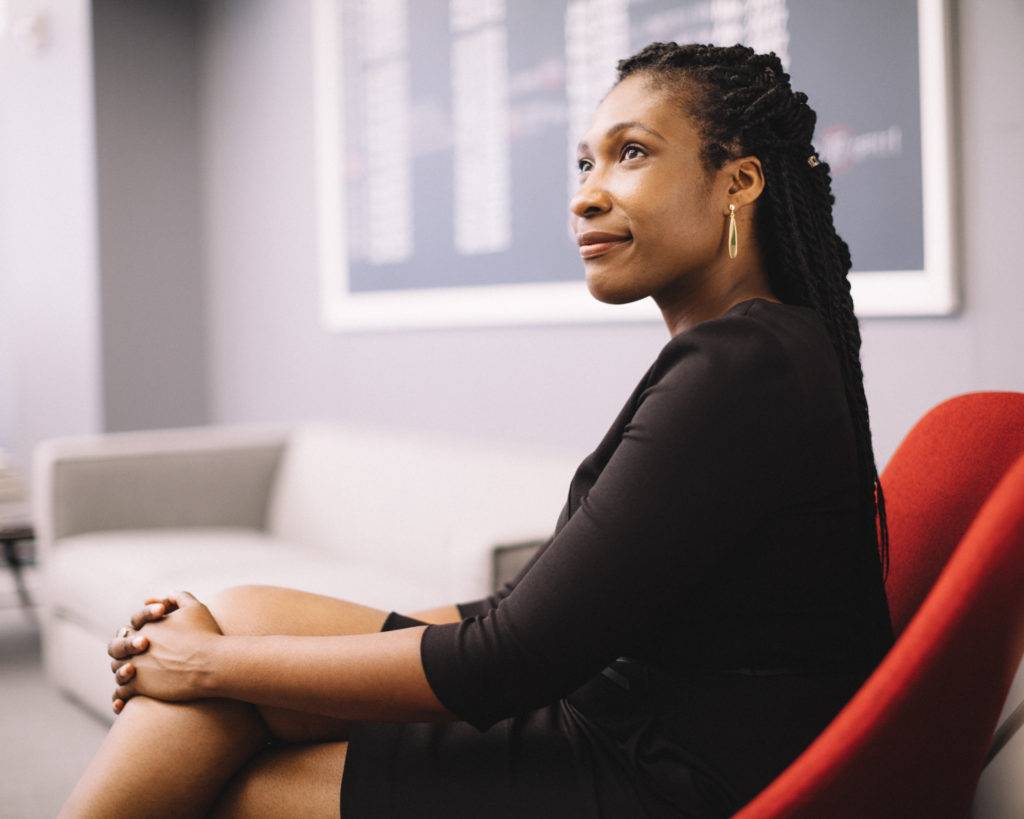
Candice wears the Etsuko dress in black.
I’VE ALWAYS BEEN FASCINATED by cultural differences, racial differences, and national differences. I studied social psychology in college, and I did my thesis on race and romantic couples. I looked at commitment, satisfaction, and trust across couples of different races; there were very few cross-race couples as shown by our current U.S. demographics, especially ten years ago. We found that the commitment was the same across every race and group, but everything else was different in terms of conflict, trust, and emotional disclosure. It’s so interesting to me, how race is a construct that influences how we behave in our relationships. I also took a class about business across cultures, and looked at how culture influences how we think about hierarchy and time—ways that influence how we can be successful. My thesis advisor recommended that I study cross-cultural psychology, which is a relatively new field, and I ended up going to the U.K. for grad school. That’s what set me on my path to studying diversity.
AFTER GRAD SCHOOL, I worked for an organization called Catalyst. They were doing research on women of color in corporate environments and some of the unique challenges they face. I applied to be part of that project, but I ended up getting tapped by their consulting team; I spent ten years doing diversity consulting there. That’s how I got into the space.
WHEN I FIRST GOT A JOB at Catalyst, I was like, “This is perfect.” Building diversity strategy for a lot of different businesses and industries was something I loved. But over time, I realized that I could never get close enough to companies and the people working within them to really fight to make an impact. I wanted to try something different, and that’s when Pinterest reached out to me. It was ideal, because I didn’t want to sign up for a company that doesn’t care about this deeply. Pinterest had been making bold moves in diversity work about a year before I got there, and they were already very committed to it.
BY NATURE, MY ROLE can be like pushing a rock uphill, not only because part of the work is helping people understand the necessity of it, but also because you have to disrupt certain things to be effective. You have to tell people, “Okay, the way you’re doing that has this potential effect. You need to re-engineer your system.” It’s exhausting.
I CONSTANTLY HAVE TO REMIND MYSELF that I am an expert in this particular area. When I’m dealing with someone who’s like, “I don’t have time for this,” I have to remind them that their perspective affects people who work for them and are trying to make Pinterest successful. It also affects our ability to reach more pinners. I have to remind myself of that purpose and share that perspective even when it gets hard. This work isn’t just important to me; it affects our bottom line.
WE’RE DEFINITELY A CASUAL COMPANY, but I wear my blazers even when most people are in T-shirts, just to feel polished. Sometimes I do feel conscious wearing high heels, walking down the hallway and knowing I’m about to walk into a room of billionaire men in sneakers. What I don’t compromise is that I have a warm personality. If I’m meeting with people who are not into warmth, I still won’t change. I’ve been told that sometimes my warmth undermines how strongly my message comes across. But I’m not going to become someone else in order to reach someone who can’t understand my mode of communication. I believe that there’s a perfect scenario where I can be my warm self and be confident and not waver. I think it’s actually very powerful.
Photographs by Rich Gilligan.






